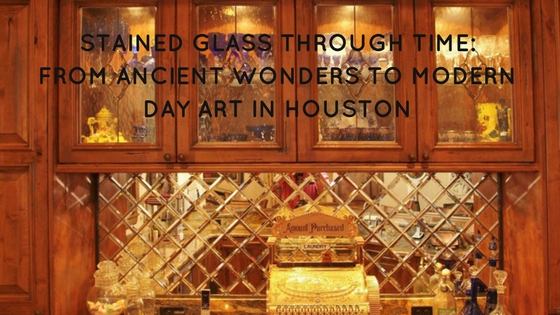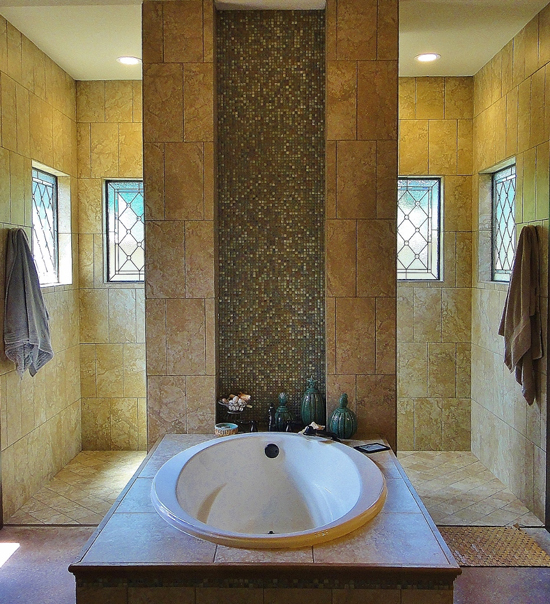
When most people think of stained glass, they imagine the large, colorful windows that adorn the halls of century old cathedrals, mosques, and temples like the Chartres Cathedral, Canterbury Cathedral, Notre Dame, and Sainte-Chapelle. But the truth is that the world of stained glass reaches far beyond this. Original glassworks were very different from these aforementioned examples, and the world of modern stained glass varies just as greatly.
Advancements in technology, the development of artistic eras and trends, and an increasing wealth of knowledge of science, mathematics, and engineering have all led to the evolution of stained glass. In Houston, one can see fine examples of the craftsmanship of modern glassmakers in historic buildings and new homes alike, indicators that stained glass holds a promising future in modern american architecture.
The Origins of Stained Glass in Churches, Synagogues, and Temples
People began making colored glass over a thousand years ago for pottery, jewelry, and small objects. However, it wasn’t until the 4th and 5th century that churches began using stained glass. In early Christian churches, ornate patterns of thinly sliced alabaster were placed into window frames, giving the windows a colored glass look. Nevertheless, the movement took off quickly.
Before long, churches in France, Britain, Syria, and Southwest Asia began manufacturing colored glass for their windows. During the Roman Gothic period, stained glass evolved greatly. Artisans found that they could use tiny glass pieces to create lifelike scenery and portraits. As a way to share the stories of the Bible to the illiterate population, religious groups began placing stained glass windows with Biblical scenes in the halls and rooms of their church. From this point forward, the popularity of religious stained glass grew quickly.
The Use of Stained Glass Today and in the Future
Today, the use of stained glass is no longer confined to purely religious settings. Artists like Louis Comfort Tiffany, Charles Rennie Mackintosh, and Frank Lloyd Wright helped pave the way for the use of stained glass in residential and commercial architecture. These artists found that stained glass had very practical uses in addition to its aesthetic benefits due to its ability to filter light, distort views, and create privacy.

It is for this reason that many luxury homes, high end hotels, and restaurants continue to include stained glass. Common places for stained glass in modern buildings are hanging lights, bathroom windows, entryways, and kitchen/dining areas. The use of stained glass in sculptures has also taken off recently as well.
The future of stained glass is yet to be determined. Many older windows in churches throughout the country are beginning to degrade, calling for the need of restoration. However, this does not indicate by any means that stained glass is a dying art. History has shown that people have found stained glass valuable time and time again. Therefore, it’s only reasonable to assume that stained glass will continue to be of use in the modern world as it evolves and takes on new forms.
Brighten Your Life with Stained Glass
Bring the beauty of stained glass into your life. Call Scottish Stained Glass today to receive an estimate on stained glass for your Houston home, church, or commercial building. As Houston’s stained glass experts, we are always happy to take on new projects and meet new clients. Call now to schedule your free consultation.
© Scottish Stained Glass 2000- All Rights Reserved | A Part of Scottish Group Companies